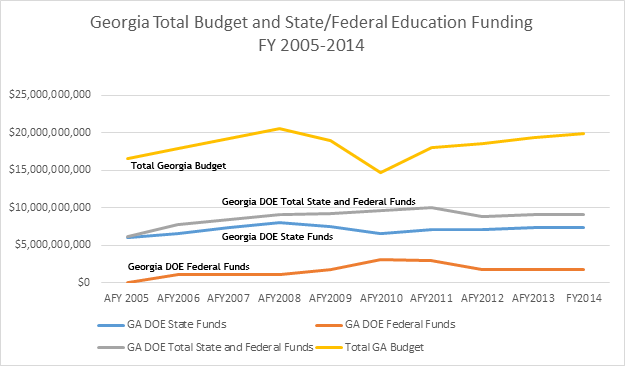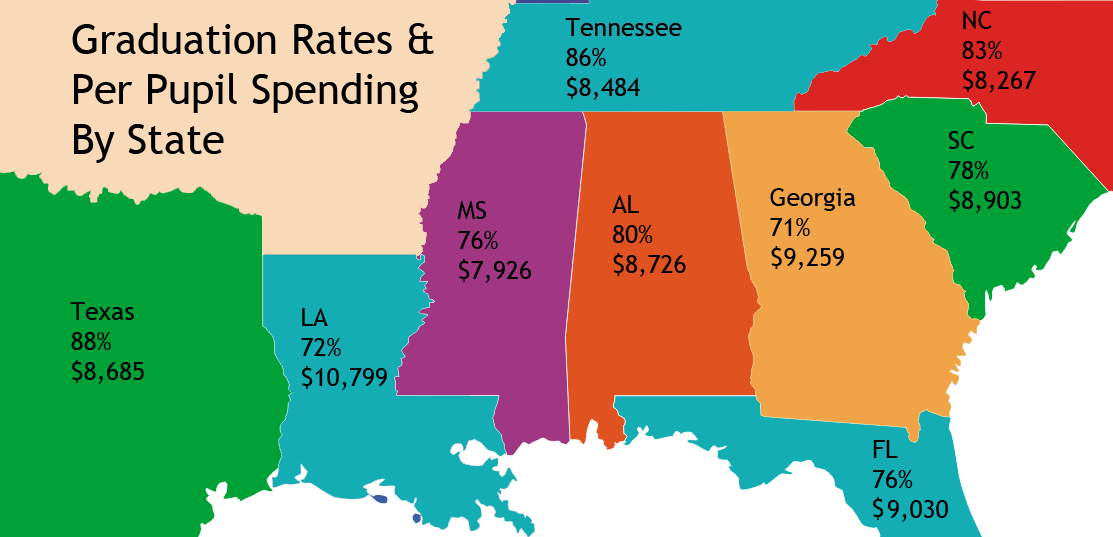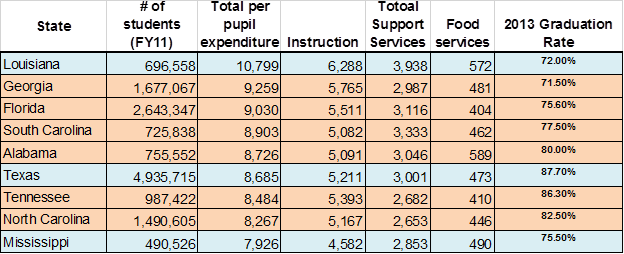![]() With all of the talk about recent weather and traffic events, we’ve lost an important education story.
With all of the talk about recent weather and traffic events, we’ve lost an important education story.
Georgia, has now become the first and only state to forfeit Race to the Top (RT3) grant money. Officials in Georgia were warned last July to address failures in implementing a new teacher evaluation system or lose almost $10 million in funding for a teacher merit pay system.
In the letter regarding the forfeiture, federal officials stated:
On September 16, 2013, I notified the State of my intent to withhold $9,904,629, pursuant to sections 454(a)(1) and 455 of the General Education Provisions Act (GEPA) (20 U.S.C. § § 1234c(a)(1) and 1234d), until the State submitted a credible plan detailing its strategy for coming into compliance with this section of its Race to the Top grant. To date, the State has not submitted such a plan. ….. To date, the OALJ has not received an application for a hearing nor have I received a written show cause response. As a result, the Department is withholding $9,904,629 of Georgia’s Race to the Top grant award, effective with this letter.
I’m not a fan of some of the aspects of RT3 but if the state commits to it, one has an obligation to manage it properly. Whether you like RT3 or not, this is an embarrassment at the national level for Georgia. The headline draws attention to the poor state of affairs regarding education management in our state. Furthermore, it removes funding that would have gone to our best performing teachers.
Georgia’s Department of Education created the very evaluation system they failed to implement. The evaluation system had problems from the start. The length of the 358-page evaluation handbook is a clue that the system may have failed under the weight of its own complexity.
Given that it is National School Choice Week, the story of a failed evaluation system is ironic. The simplicity and equilibrium of parent choice in education as a metric and driver of success is all the more compelling, compared to the byzantine and lengthy teacher evaluation system created by bureaucrats.
Georgians deserve more choice and less bureaucratic failure.
 I am pleased to hear the DeKalb school system’s accreditation status has been upgraded from “probation” to “warned”. I worked diligently to shine light on the poor fiscal management of DeKalb. Some of my work was even cited in the SACS report from 2012. Clearly DeKalb still has a long way to go. Academic achievement and growth in many schools is unacceptable. DeKalb’s graduation rate, at 58.9%, is far too low. Of the 25 high schools in DeKalb, 8 have graduation rates below 50%, while only 4 have rates above 75%. All four of these schools are specialty or magnet schools.
I am pleased to hear the DeKalb school system’s accreditation status has been upgraded from “probation” to “warned”. I worked diligently to shine light on the poor fiscal management of DeKalb. Some of my work was even cited in the SACS report from 2012. Clearly DeKalb still has a long way to go. Academic achievement and growth in many schools is unacceptable. DeKalb’s graduation rate, at 58.9%, is far too low. Of the 25 high schools in DeKalb, 8 have graduation rates below 50%, while only 4 have rates above 75%. All four of these schools are specialty or magnet schools. 


 Follow Nancy Jester's Posts
Follow Nancy Jester's Posts